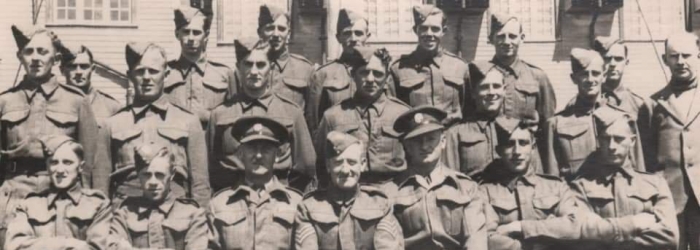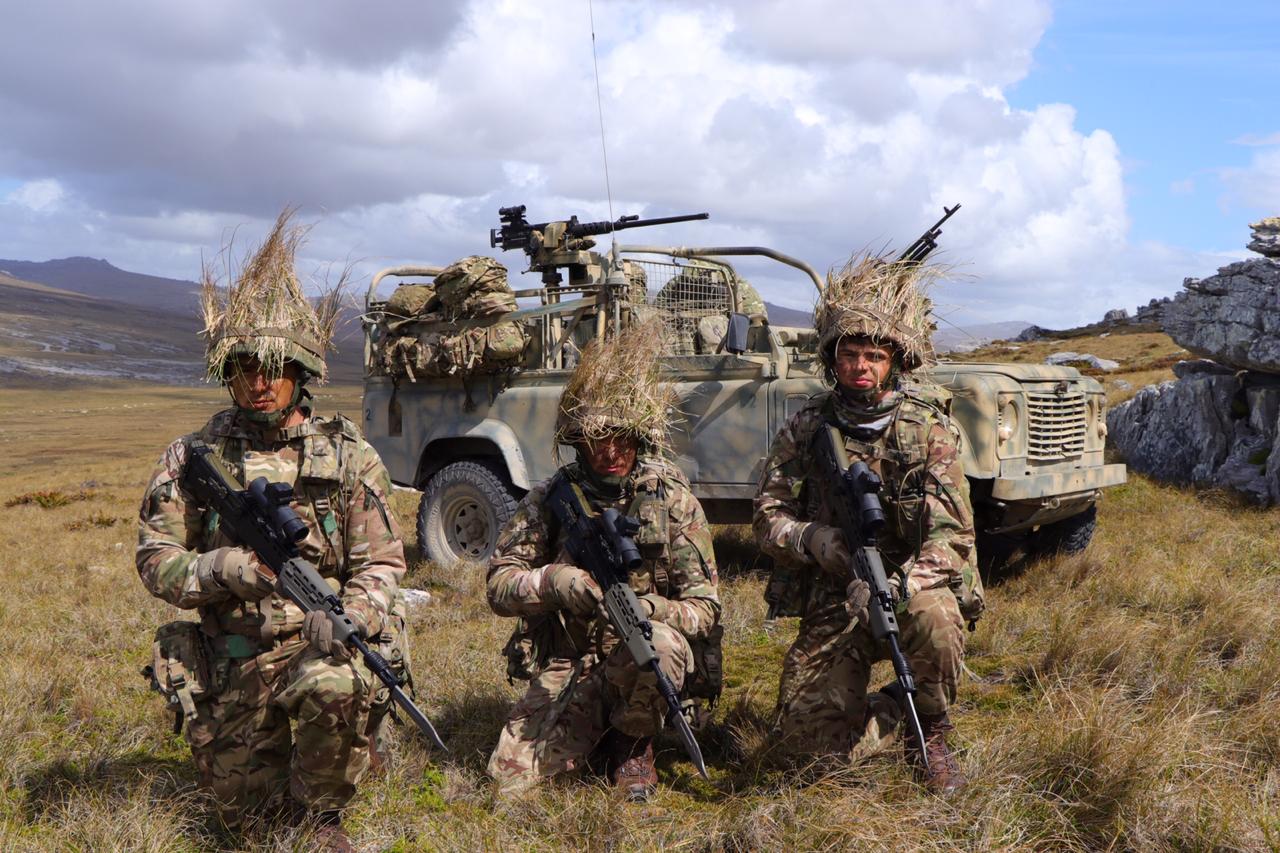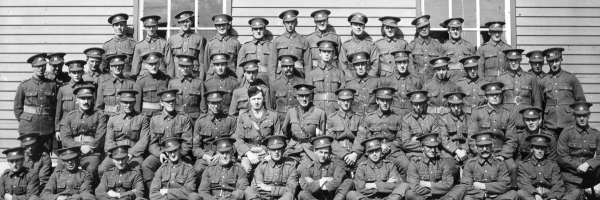The Falkland Islands Defence Force – a brief history

1847
The origins of the Falkland Islands Defence Force (FIDF) can be traced back as far as 30 December 1847 when Lt Richard Clement Moody, RE, the first Governor of the Falkland Islands, formed what he called "the Militia Force of the Falkland Islands". The Force consisted of mounted and artillery corps, plus two infantry platoons. The nominal role of the force shows many names of early settlers whose descendants still live in the Falklands Islands, some of whom are current members of the FIDF
1854
In the period following its formation in 1847 it appears the Force declined, probably due to lack of regular training. The Crimean War, however, provided a good reason to again look to the defence of the Islands, mainly due to the possibility of aggression from Russian warships and privateers. In 1854 Governor Rennie reformed the volunteer force.
1892
In June a Chilean steamer called the Maipo belonging to the Revolutionary party in Chile's Civil War arrived in Port William to effect engine repairs. There were over 200 fully armed soldiers and sailors onboard, and the risk to security prompted Governor Sir Roger Goldsworthy to form (reform) an armed body of volunteers. The first body of 37 volunteers were sworn in at Government House on 13th June 1892. Training assistance was obtained from the UK in the form of Sergeant William Quianlan of the Royal Marines. Sgt. Quianlan served with the Falkland Islands Volunteers from 1892 to 1895, and during that time was given an award for bravery for rescuing two seamen from drowning in Stanley Harbour.
1914-1919 WWI
During the First World War (WWI) the Colony of the Falkland Islands was placed on a war footing and the Falkland Islands Volunteers were mobilised for service in military outposts positioned around Stanley In 1914 the Volunteer Corps were issued the cap badge of the British Army General Service Corps. This was used into the 1930s on Dress uniforms.
On 1st December 1914, eight Volunteers lost their lives in the Canache while on active service. The men drowned when their boat overturned.
On 8th December, the smoke of a German fleet was spotted by one of the outposts, and subsequently the outpost on Sappers Hill provided valuable information on the movement of the vessels. The end result was the resounding victory of the Battle of the Falklands. This event is commemorated each year by a parade that is held at the WWI Memorial on the seafront of Stanley. During WWI, 36 Falkland Islanders (many of them members of the FI Volunteers), enrolled with His Majesty's Forces. Ten lost their lives during service overseas. During this period the local government also invested heavily in the Force. The Military estimate for 1915 totalled £10,000, this being the highest expenditure on any one government department in that year.
1919
In 1919, the FI Volunteers was ordered to stand down from active service and resume a peace-time training routine.
1920
On the 13th December 1920, the Falkland Islands Defence Force was formed from the Volunteer Corps.
1930's
In 1931 on the recomendation of Captain C.E.C Ransome Royal Marines visiting the island on HMS Danae the Defence Force addopted Royal Marine Blue Dress Uniforms for ceremonial duties. This style of uniform is still in use today.
During the 1930’s several Force members attended training in the UK, this included Training and Instruction on Costal Artilery, Vickers Machine Gun training and Drill Instruction and Physical training courses.
1939-1945 WWII
On 3rd Sept 1939 Governor Sir Herbert Henniker-Heaton issued the Mobilisation order for all members of the FIDF. The FIDF manned two 6” costal guns at Canopus & Sapper Hill and extinguished all navigation lights and the lighthouse. By Tuesday 5th Sept all defensive positions around Stanley we occupied. This included Yorke Bay, Hookers Pt, Watt Cove, Eliza Cove, Navy Pt, Camber, Moody brook and Observation posts were established on Mt Low and Mt William.
The FIDF reported a total strength of 8 Officers & 267 Other Ranks formed into units of Costal Artillery, Infantry and Mounted Infantry. By the 6th Sept Coast Watching stations were established around the islands to warn of enemy shipping. These would remain permanently manned until late 1944 and early 1945. These were located at North Lookout Hill, Salvador Hill, Indian Mountain, Port San Carlos, Fanning’s Head, Goose Green, Fanny Cove, Lively Island, Pleasant Peak, Fitzroy, Pebble Island, Calm Head, New Island, West Point & Weddell Island.
On the 27th Sept a group of 32 British citizens arrived from Argentina with 27 being accepted into the Force and the remaining being returned to Argentina.
In 1942 the FIDF were reinforced by 11th Battalion, West Yorkshire Regiment (Prince of Wales Own) & 359th Heavy Anti-Aircraft Battery, Royal Artillery. The FIDF worked closely with the West Yorks until 1944 when they were replaced by the Royal Scots and 132 Force.
It is not known how many Falkland Islanders travelled north to join HM's Forces during WWII, but it is believed that approximately 150 joined HM services and 23 were killed in action. In 1944 Falkland Islanders serving overseas in HM Forces were awarded the shoulder flash “Falkland Islands” in recognition of the contribution made by the islands.
On the 5th Nov 1944 it was announced that the King had approved an alliance between the FIDF Costal Artillery and the Royal Regiment of Artillery and the FIDF Infantry Company & Mounted Rifles with the West Yorkshire Regiment (Prince of Wales Own). This affiliation continues today with the Yorkshire Regiment.
On the 22nd May 1945 the SS Highland Princess arrived to return all of 132 Force to the UK and the 2nd July 1945 the FIDF was stood down reverting to peacetime training.
 Members of the FIDF departing in 1944 to join UK forces
Members of the FIDF departing in 1944 to join UK forces
1946
In June, 13 members of the FIDF took part in the Victory Parade in London.
1950's
From 1952 until 1982 there was a Royal Marine presence in the Falkland Island, from the mid 1960s until 1982, the FIDF received training assistance from the Royal Marines this resumed in 2004 with a WO2 Royal Marine PSI being attached to the Force. During this time the FIDF adopted Royal Marine Drill.
1966
On 28 September, the Falkland Islands became the site of one of the world's first airplane hijacking incident. 19 armed Argentine extremists hijacked a DC-4 aircraft during an internal flight in Argentina and landed on the Stanley Racecourse. Their intention was to stage a symbolic invasion of the Falkland Islands. The Royal Marines and the FIDF reinforced with ex-FIDF members and contractors encircled the aircraft. Using a combination of food, water, heat and sleep deprivation tactics, they successfully forced the terrorists to surrender without loss of life.
Following this incident the FIDF was put on heightened alert and a section was held on permanent standby until February 1967.
1968
In November, a light aircraft from Argentina landed illegally on Eliza Cove Road. The FIDF was again deployed to contain the incursion, however this time the passengers were unarmed Argentine journalists.
1982 and the Falklands Conflict
On 1 April, the FIDF was mobilized (along with Royal Marine NP8901), to defend the Falkland Islands from a full-scale Argentine invasion. 32 Members of the Force responded to the callout and took up defensive positions around Stanley. On the morning of 2 April the Governor, Sir Rex Hunt, ordered the FIDF and Royal Marines to lay down their arms. The Argentines seized all equipment belonging to the FIDF and declared it to be an illegal organisation. Several members of the FIDF were arrested by the Argentines and sent to Fox Bay where they remained under house arrest for the duration of the war. Members of the FIDF, along with many other FI residents, provided assistance to British Forces during the struggle to liberate the Falkland Islands that ended with the Argentine surrender on 14 June 1982.
1983
FIDF was reformed in 1983. The reformed FIDF is entirely funded by the Falkland Islands Government and follows British Military doctrine in training and operations.
1999
Members of the FIDF received training with Royal Navy establishments in the UK in the operation and maintenance of an Oerlikon 7 Alpha 20mm cannon, board and search and various other skills associated with Fisheries protection duties. Subsequently the FIDF was able to give the Falkland Islands Government Fisheries Department the capability of mounting armed deterrence against illegal fishing activity within the Falklands Conservation Zones.
2000
In mid September the FIDF marched from their old premises on John Street to the newly built Headquarters on the South East side of Stanley.
2007
A small detachment of serving and retired FIDF personnel took part in the Ceremony in London to commemorate the 25th Anniversary of the 1982 Falklands War.
2018
1st December 2018 Major Peter Biggs retired after 35 years Service and Major Justin McPhee took over command of the Force.
2019
The FIDF undertook a modernisation program to update and modernise equipment and enhance compatibility with UK forces. The force retired its Steyr AUG assault rifle system and adopted the UK L85A2 weapon systems and upgraded a wide range of combat equipment. Members of the Force visited DSEI 2019 in London to gain a greater understanding of the latest military equipment
In October, Major Justin McPhee became the first Defence Force Officer to attend the UK Defence Academy and successfully completed the UK Intermediate Command & Staff Course (Land Reserve).

2020
The FIDF marked 100 years on the 13th Dec 2020 since the Force was renamed from the Falkland Islands Volunteer Corps.
2021
Present Day
The Force is configured to undertake a full range of light infantry roles with training expertise is provided by a Royal Marine Warrant Officer, employed as a Permanent Staff Instructor through a secondment arrangement with UK MOD. FIDF Soldiers work closely alongside personnel from British Forces South Atlantic Islands and can undertake military training courses in the UK.
The Force supports the local community by providing mountain rescue capability and trained Search and Rescue teams and provides support to the Falkland Islands Government in times of disaster or emergency.




